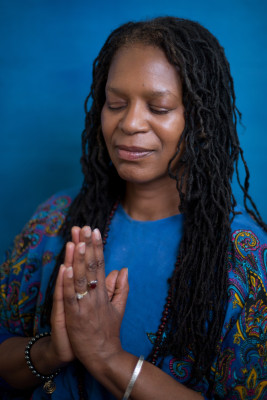The totality of our consciousness is comprised of three states. Our three levels of consciousness are the subconscious, the conscious, and the superconscious. Each level of consciousness represents a differing degree of intensity of awareness…
Subconscious
The first level of consciousness, the subconscious, is relatively dim in awareness: it is the stuff of which dreams are made. We may think of it as the repository of all remembered experiences, impressions left on the mind by those experiences, and tendencies awakened or reinforced by those impressions.

Every experience we’ve ever had, every thought, every impression of loss or gain, resides in the subconscious mind and determines our patterns of thought and behavior far more than we realize.
The subconscious, being unrestricted by the rigid demands of logic, permits a certain flow of ideas. This flow may border on intuition, but if the ideas are too circumscribed by subjectivity, they won’t correspond with the external world around us. When we dream at night, we are mainly operating on the subconscious level of consciousness.
The subconscious mind can all too easily intrude itself on our conscious awareness, tricking us into thinking we’re getting intuitive guidance, when actually we’re merely being influenced by past impressions and unfulfilled desires. The subconscious mind is in some ways close to the superconscious, where real intuition resides.
Both represent a flow of awareness without logical obstructions. The subconscious is therefore more open to the intuitions of the superconscious, and sometimes receives them, though usually mixed with confusing imagery. To be really clear in the guidance we receive is difficult, but very important.
Calamitous decisions have been made in the belief that one was drawing on higher guidance, when in fact one was responding only to subconscious preconditioning.
Conscious

This process is also strongly affected by the opinions of others, which can cloud our ability to draw true guidance.
Dividing and separating the world into either/or categories, the conscious level of awareness is problem-oriented.It’s difficult to be completely certain of decisions drawn from this level, because the analytical mind can see all the possible solutions. But ultimately it doesn’t have the ability to distinguish which one is best.
If we rely exclusively on the conscious mind, we may find ourselves lacking in certainty and slipping into a state of perpetual indecision.
Superconscious
Intuition and heightened mental clarity flow from superconscious awareness. The conscious mind is limited by its analytical nature, and therefore sees all things as separate and distinct. We may be puzzled by a certain situation, but because it seems unrelated to other events, it’s difficult to draw a clear course of action.
By contrast, because the superconscious level of consciousness is unitive and sees all things as part of a whole, it can readily draw solutions. In superconsciousness the problem and the solution are seen as one, as though the solution was a natural outgrowth from the problem. Learn more about the superconscious

Start a New Meditation Practice or Inspire Your Current One
The 10-week Ananda Course in Meditation online course is designed to provide in-depth instruction in scientific meditation techniques that bring more peace, deeper relaxation, and focused concentration to every area of your life, regardless of outer conditions.
These techniques are based on the teachings of Paramhansa Yogananda, author of Autobiography of a Yogi.
